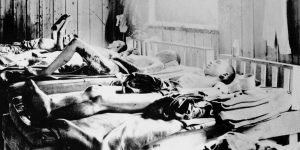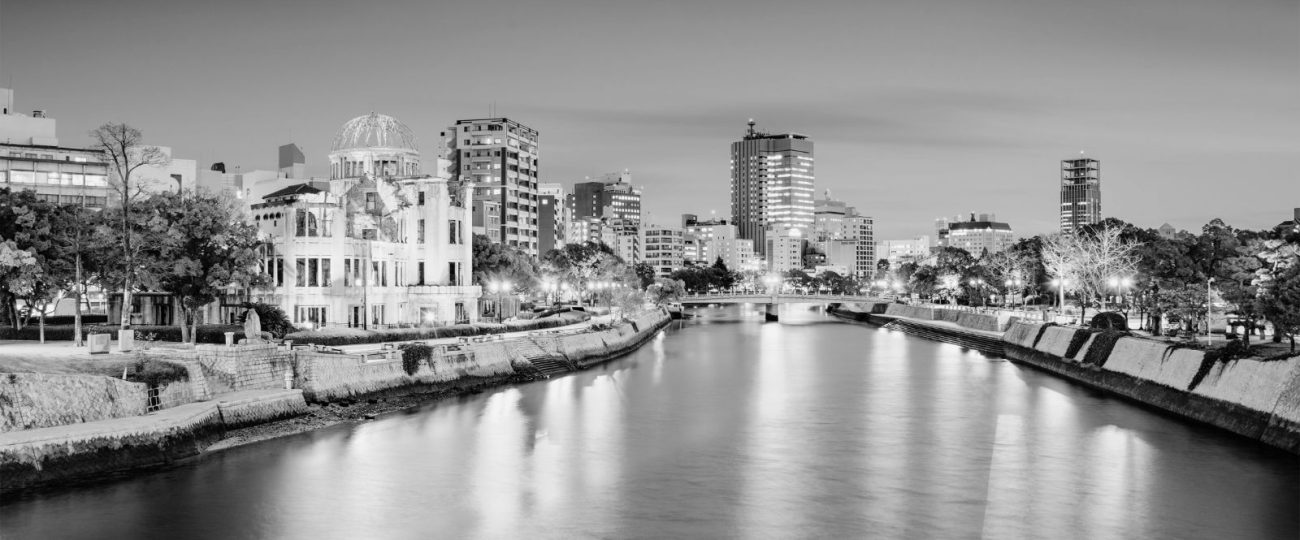What Happened On August 6th?
On August 6, 1945, the United States dropped an atomic bomb on Hiroshima, Japan. At 8:15 a.m., Colonel Paul Tibbets piloted the B-29 bomber Enola Gay and released “Little Boy,” a uranium bomb, over the city. The bomb exploded about 600 meters above Hiroshima, unleashing a massive blast that created temperatures of several million degrees at its core, vaporizing everything nearby. The explosion obliterated five square miles of the city, killing an estimated 70,000 to 80,000 people instantly, with tens of thousands more dying from injuries and radiation sickness in the following weeks.
The bomb unleashed a blast equivalent to 15,000 tons of TNT. The explosion generated temperatures of several million degrees, vaporizing everything nearby. The shockwave and firestorm destroyed five square miles of the city, with a blinding flash visible from 50 miles away.
The Ticking Clock
Years earlier, the Manhattan Project aimed to develop an atomic bomb before Nazi Germany. J. Robert Oppenheimer and General Leslie Groves led the project, which included scientists like Enrico Fermi, Niels Bohr, and Richard Feynman. The project’s facilities were spread across the United States, including Los Alamos in New Mexico, Oak Ridge in Tennessee, and Hanford in Washington. Vice President Truman did not learn about the project until he became President. The codename “Trinity” designated the first test explosion in New Mexico on July 16, 1945, which successfully demonstrated the bomb’s potential.
By mid-1945, the Allies had won in Europe, but the war in the Pacific continued. Japan, though weakened, refused to surrender. President Harry S. Truman decided to use the atomic bomb to force Japan’s surrender and save lives.
Truman weighed moral and strategic implications when deciding to use the bomb. Secretary of War Henry Stimson and General Groves argued it would end the war quickly. They chose Hiroshima for its military importance and because it had remained largely untouched by conventional bombing. Hiroshima housed the Second General Army and Fifth Division, making it a strategic military target. Stimson influenced the decision to target Hiroshima over cities like Kyoto, admiring Kyoto’s cultural heritage and arguing against its destruction.
The decision to use the bomb also served as retaliation for the Japanese attack on Pearl Harbor on December 7, 1941. This surprise military strike by the Japanese Navy against the United States naval base in Hawaii resulted in mass casualties (2400) and spurred the U.S. to enter World War II. The use of the atomic bomb on Hiroshima aimed to deliver a decisive blow to Japan and end the war.
The Immediate Aftermath
The aftermath was catastrophic. An estimated 70,000 to 80,000 people died instantly, with tens of thousands more succumbing to injuries and radiation sickness in the following weeks. Survivors, known as hibakusha, endured severe burns, radiation poisoning, and psychological trauma. The city’s infrastructure lay in ruins.

Some buildings, like the Bank of Japan’s Hiroshima branch, withstood the blast due to their reinforced concrete structure, providing rare examples of buildings that survived the widespread destruction. Many survivors faced social stigmatization due to fears of radiation sickness being contagious, which affected their employment and marriage prospects.
In the aftermath, “shadows” of vaporized victims etched onto surfaces like stone steps and walls, eerie reminders of the bomb’s intense heat and the human lives it obliterated in an instant. The intense light of the explosion bleached the surrounding surfaces except where objects or people had blocked the light, creating eerie silhouettes.
Tsutomu Yamaguchi’s Tale
Tsutomu Yamaguchi, a Japanese engineer, survived both the Hiroshima and Nagasaki bombings. Severely burned in Hiroshima, he returned to Nagasaki, only to face the second bombing on August 9. Yamaguchi’s story highlighted the profound human suffering caused by the bombings. His experience did not receive official recognition from the Japanese government until 2009, making him the only person confirmed to have survived both bombings.
Surrender
Reactions to the bombing mixed relief and horror. In the United States, many Americans believed the bomb ended the war quickly, saving countless lives. However, reports and images of the devastation sparked ethical debates about the use of such a weapon. In Japan, the bombings of Hiroshima and Nagasaki led to a swift surrender. On August 15, 1945, Emperor Hirohito announced Japan’s surrender, citing the overwhelming power of “a new and most cruel bomb“. This marked the end of World War II but came at an enormous human cost.
The bombings also influenced global politics, triggering a nuclear arms race during the Cold War as countries rushed to develop their own atomic capabilities.
The bombings began the nuclear age, altering global politics and military strategy. The destructive power of atomic weapons prompted urgent discussions on arms control and non-proliferation. In the following decades, Hiroshima transformed into a center for peace and anti-nuclear advocacy. The Hiroshima Peace Memorial Park, near the bomb’s hypocenter, commemorated the victims and promoted global disarmament. The annual peace ceremony on August 6th attracted visitors worldwide, reaffirming a commitment to prevent such a tragedy. Hiroshima’s mayor sent an annual letter to the leaders of countries conducting nuclear tests, urging them to stop and reminding them of the city’s suffering.
Ethical and moral reflections on the bombing continued. Scholars, historians, and ethicists debated the necessity and morality of using atomic weapons. Some argued it was necessary to end a brutal war, while others contended it was a profound moral failure. The bombing of Hiroshima revealed the destructive potential of human conflict and the need for peace.
Many hibakusha became advocates for nuclear disarmament, sharing their stories worldwide to educate others about the horrors of nuclear warfare. Their testimonies contributed to the ongoing global dialogue on peace and the ethical implications of nuclear weapons.





